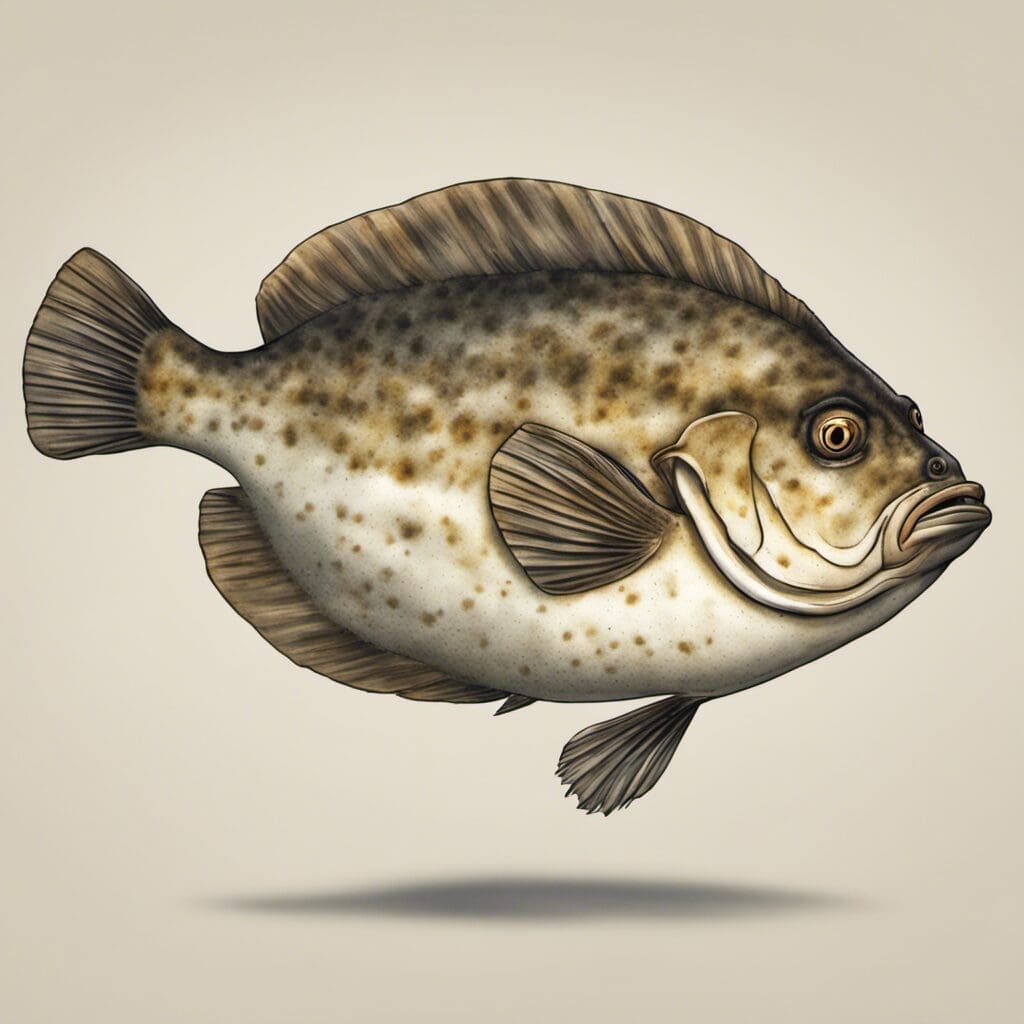Introduction
The flounder is a species of flatfish includes several genera and species. It belongs to the family Pleuronectidae.
Conservation Status
The flounder’s current status varies with species, but many are listed as least concern by the IUCN Red List. In areas where populations are threatened, efforts are being made to sustain populations and habitats alike.
Statistics
| Stat | Average | Range |
|---|---|---|
| Length | 22.5-60 cm | 12-95 cm |
| Weight | 1-7 kg | 0.2-9 kg |
| Average Lifespan | 3-10 years |
Distribution
Flounders inhabit the coastal regions of the Atlantic and Pacific oceans, from the Arctic to the tropics. Some species may briefly migrate to deeper waters during the winter.
Habitats
- Water type: Saltwater
- Depth range: 0-500 m
- Temperature range: -1.5 to 27°C
When and Where to See
Flounders are most active in late spring and fall. They can be seen throughout the day, but are most likely to be seen during morning and evening feeding times.
Best Fishing Locations
- Alaska, USA
- Nova Scotia, Canada
- Baltic Sea, Europe
- Bay of Biscay, France
- Japan Sea
- Yellow Sea, China/Korea
- Norwegian Sea
- Celtic Sea, UK/France
- North Sea, Europe
- Irish Sea, Ireland/UK
To find flounders, one should look in shallow waters near the shore, particularly in estuaries and near underwater vegetation.
How to Catch
Preferred bait for flounders includes smaller fish, worms, and shrimp. Common fishing techniques include bottom fishing and trolling. Flounders are most likely to bite during morning and evening feeding times.
Identification Guide
Flounders can be identified by their flat bodies, both eyes on one side of the head, and a dappled coloration that changes to match the seabed. They can be differentiated from similar species such as sole and halibut by their rounded, almost diamond-like shape.
Culinary
Flounder has a mild, sweet taste. It’s low in fat, high in protein and a good source of vitamin D and B vitamins. Recipes often involve frying, baking, or grilling the fish.
Additional Information
Flounders are carnivorous, feeding on a diet of smaller fish, crustaceans, and invertebrates. They have the unique ability to change their skin color and pattern to match their surroundings, providing excellent camouflage from predators such as seals and larger fish. When it comes to mating, the female releases her eggs into the water, which are later fertilized by the male.
Historically, flounders have been important in many cultures, featuring in folklore and even playing a role in heraldry. Additionally, they have been seen as a valuable economic resource, providing food and employment for fishing communities around the world.
References and Further Reading
- FAO species catalogue Volume 11
- IUCN Red List Search Results
- FishBase Summary for Family Pleuronectidae
- World Flounder Fishing Species

